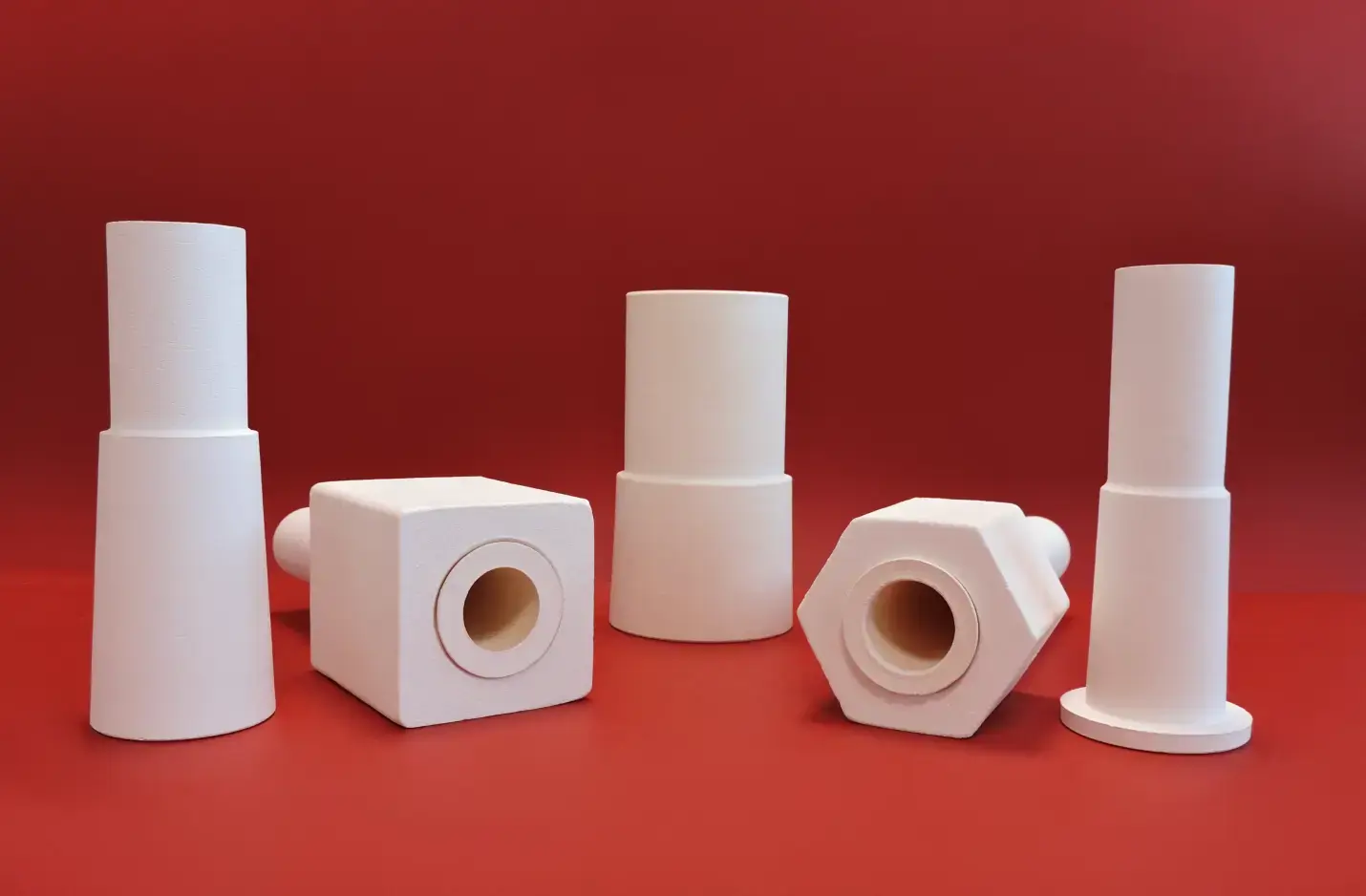Efficiency, durability, and sustainability with refractory ceramics.
Refractory ceramics is an essential solution in different industrial sectors due to their extraordinary resistance to high temperatures and extreme environmental conditions.
Un materiale refrattario è un materiale capace di resistere per lunghi periodi ad elevate temperature senza reagire chimicamente con gli altri materiali con i quali si trova in contatto, garantendo stabilità strutturale e funzionalità anche nelle condizioni più estreme. La ceramica refrattaria, in particolare, può sopportare temperature fino a 1600 °C, rendendola ideale per applicazioni ad alta temperatura, come forni industriali, impianti metallurgici e sistemi termici rigenerativi a cui offre prestazioni affidabili per decenni.
A refractory material is one that can withstand high temperatures for extended periods without chemically reacting with other materials it comes into contact with, ensuring structural stability and functionality even in the most extreme conditions. Refractory ceramics, in particular, can endure temperatures up to 1600°C, making them ideal for high-temperature applications such as industrial furnaces, metallurgical plants, and regenerative thermal systems, where they provide reliable performance for decades.
Furthermore, the operational lifespan of refractory ceramics can be further extended by integrating them with materials that have a higher thermal safety margin. By increasing the safety margin, the maximum usage threshold is raised, which corresponds to the temperature at which the refractory ceramic can withstand without undergoing alterations.
Other characteristics of a refractory material like ceramic include the ability to dissipate heat in a controlled manner, protecting structures without retaining excessive heat, and resistance to wear, which can vary depending on the material composition and the specific application requirements.
For a lifespan approximately 10-13 times longer compared to the same component made of steel.
How to make a material refractory?
Alumina (Al₂O₃) provides high thermal and chemical resistance, making it one of the most important components in the formulation of refractory ceramics. Therefore, the higher the percentage of alumina, the better the material's thermal and chemical resistance.
Materials with alumina content up to 94% are particularly suitable for extreme environments, such as combustion plants and refining processes in the oil & gas sector.

Main Properties of refractory ceramics
Thermal Stability
Refractory ceramics can withstand extremely high temperatures without losing their mechanical and chemical properties, making them an indispensable material in high-temperature industrial processes.
Mechanical Resistance
Due to its compact structure, refractory ceramics provide high mechanical resistance, essential for withstanding heavy loads and thermal stress conditions.
Chemical Resistance
Unlike other materials, refractory ceramics are chemically inert and do not react with acids, bases, or other corrosive agents. That is why its lifespand is so long.
Low Oxidation
At high temperatures, many materials tend to oxidize and deteriorate. Refractory ceramics, on the other hand, resist oxidation and maintain their performance over the long term.
Dielectric Properties
Refractory ceramics can act as an insulator without conducting electricity. They can withstand heat, transfer it to another material, and simultaneously dissipate it effectively.
Concrete advantages and maximum sustainability
Compared to other refractory materials, ceramics stand out for numerous advantages, including the complete absence of the release of harmful fibers or particles during use and disposal, unlike some fibrous materials that may be harmful to health. Additionally, ceramics have a longer lifespan than cementitious materials, which tend to deteriorate more quickly, and they offer high resistance to thermal shock and chemical agents. These qualities significantly contribute to reducing maintenance and replacement costs.
In addition to its excellent technical performance, refractory ceramics also represent a sustainable choice: they do not produce hazardous special waste, simplifying recycling and disposal operations. Furthermore, due to its extremely long lifespan, it helps limit resource consumption over time. Finally, its ability to retain heat with great efficiency reduces energy expenditure in industrial processes, thus contributing to a more responsible use of energy. For this reason, the future of refractory ceramics is moving towards more efficient and sustainable solutions, such as:
- Regenerative burners: devices that accumulate heat and reuse it to optimize energy consumption.
- Regenerative thermal systems: based on the use of ceramic structures such as honeycombs, capable of efficiently storing and transferring heat.
- High-alumina ferrules: particularly resistant to chemical attacks, ideal for applications in extreme environments such as MSW (Municipal Solid Waste) - sulfur recovery units, and steam generation systems - steam boilers.
Savar Refractory Ceramics. A choice for the future of your business.
Formed refractory ceramics represent an excellent choice for industries that require materials resistant to high temperatures and aggressive chemical agents. Thanks to its stability, durability, and sustainability, it will continue to be a benchmark in the refractory materials sector, with increasingly innovative developments to optimize performance and reduce environmental impact.
